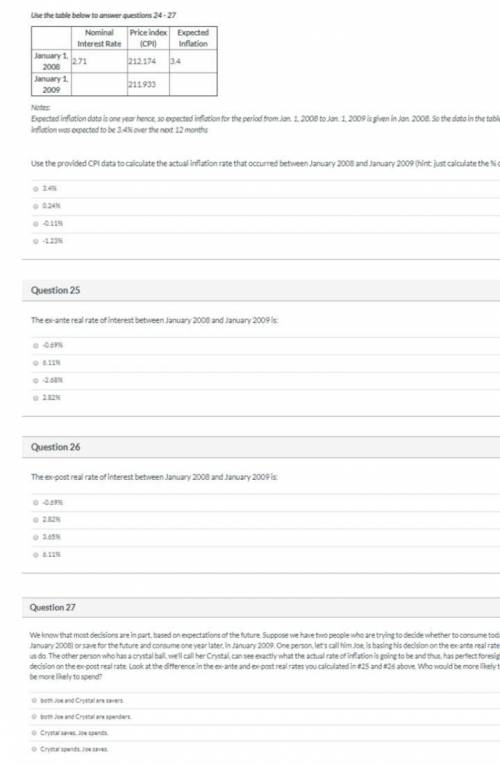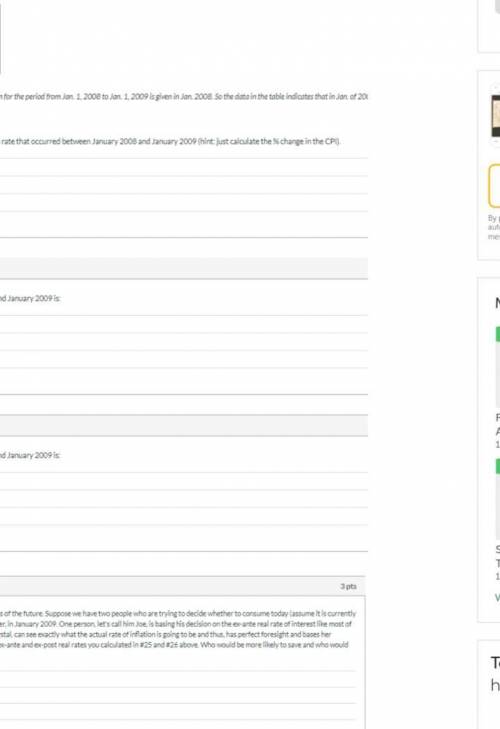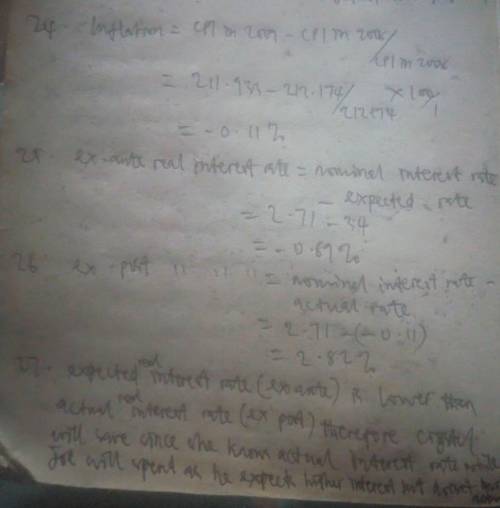
Business, 13.10.2020 04:01 reaperqueen21
We know that most decisions are in part, based on expectations of the future. Suppose we have two people who are trying to decide whether to consume today (assume it is currently January 2008) or save for the future and consume one year later, in January 2009. One person, let's call him Joe, is basing his decision on the ex-ante real rate of interest like most of us do. The other person who has a crystal ball, we'll call her Crystal, can see exactly what the actual rate of inflation is going to be and thus, has perfect foresight and bases her decision on the ex-post real rate. Look at the difference in the ex-ante and ex-post real rates you calculated in #25 and # 26 above. Who would be more likely to save and who would be more likely to spend? A. Both Joe and Crystal are savers. B. Both Joe and Crystal are spenders. C. Crystal saves, Joe spends. D. Crystal spends, Joe saves.

Answers: 2


Another question on Business

Business, 22.06.2019 05:50
1. all other things equal, according to the law of demand, when the price of a good falls, the demand for the good falls the demand for the good rises the quantity demanded of the good falls the quantity demanded of the good rises 2. when a market is in equilibrium, the quantity of the good that buyers are willing and able to buy exactly equals the quantity that sellers are willing and able to sell cannot be determined is less than the quantity that sellers are willing and able to sell is greater than the quantity that sellers are willing and able to sell 3. which of the following factors does not influence the demand for a good or service? consumer (buyer) income the price of related goods the number of sellers buyer expectations 4. when the number of sellers in a market increases, demand rises supply rises the price rises, all else equal the number of buyers falls
Answers: 1

Business, 22.06.2019 11:00
What is the advantage of developing criteria for assessing the effectiveness of business products and processes? a. assessment criteria are answers. b.assessment criteria are inexpensive. c.assessment criteria provide you with a list of relevant things to measure. d.assessment criteria provide you with a list of people to contact to learn more about process mentoring.
Answers: 3

Business, 22.06.2019 20:20
Precision aviation had a profit margin of 6.25%, a total assets turnover of 1.5, and an equity multiplier of 1.8. what was the firm's roe? a. 15.23%b. 16.03%c. 16.88%d. 17.72%e. 18.60%
Answers: 2

Business, 22.06.2019 20:30
Mordica company identifies three activities in its manufacturing process: machine setups, machining, and inspections. estimated annual overhead cost for each activity is $156,960, $382,800, and $84,640, respectively. the cost driver for each activity and the expected annual usage are number of setups 2,180, machine hours 25,520, and number of inspections 1,840. compute the overhead rate for each activity. machine setups $ per setup machining $ per machine hour inspections $ per inspection
Answers: 1
You know the right answer?
We know that most decisions are in part, based on expectations of the future. Suppose we have two pe...
Questions

English, 27.07.2019 22:00


Geography, 27.07.2019 22:00

Chemistry, 27.07.2019 22:00

History, 27.07.2019 22:00





Biology, 27.07.2019 22:00

Spanish, 27.07.2019 22:00

Social Studies, 27.07.2019 22:00





History, 27.07.2019 22:00

English, 27.07.2019 22:00

Mathematics, 27.07.2019 22:00

Biology, 27.07.2019 22:00






